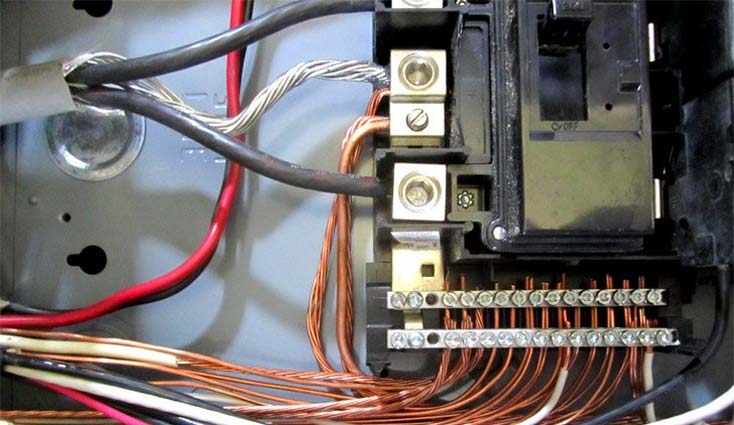Conductors

Derating Current-Carrying Conductors for Conditions of Use
If you ask a seasoned electrician how many No. 12 AWG conductors will fit into a 3/4″ EMT conduit system, you may get a response such as “one more!” While this is amusing (and typically true), there are precautions that must be taken according to the NEC whenever conductors are bundled together in a raceway, cable, or even in a ditch in the earth.
Read ArticleMost Recent
-
Read Article
Conduit and Cables Exposed to Sunlight on Rooftops
Anyone who has been on top of a roof on a hot summer day knows what it’s like to stand in the middle of an oven. Extreme temperatures from the sun can bake everything in sight, from shingles to appliances, and even electrical conductors and conduit.
Conductor insulation is meant to provide long lasting protection from expected heat due to the flow of electricity and normal environmental factors. However, excessive heat from solar radiation can damage conductors and cause premature failures. -
Read Article
Understanding Class 1, 2, and 3 Circuits: What Electricians Need to Know
NEC Article 725 is dedicated to specialized circuitry, different from standard power and lighting circuits. The limited power and voltage of these circuits is what makes them a separate and specialized wiring method.
-
Read Article
Feeders Part 1: What is a Feeder?
In order to understand what a feeder is, it is best to start with what a feeder is not. The conductors between the utility service point and the service disconnecting means are service conductors, not feeder conductors. Special service conductor rules apply because these conductors do not have short-circuit or […]
-
Read Article
Article 90: Simple But Important Changes
When reading a book, how often do we skip past the introduction and start with the chapters that interest us? That happens to those of us that use the NEC as well, but understanding the introduction to the code in Article 90 is key to properly applying the technical requirements […]









